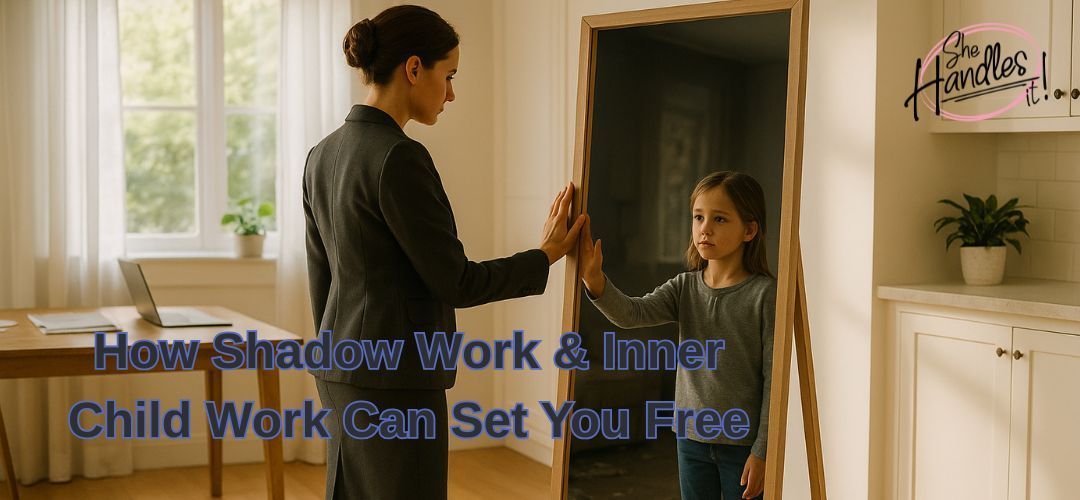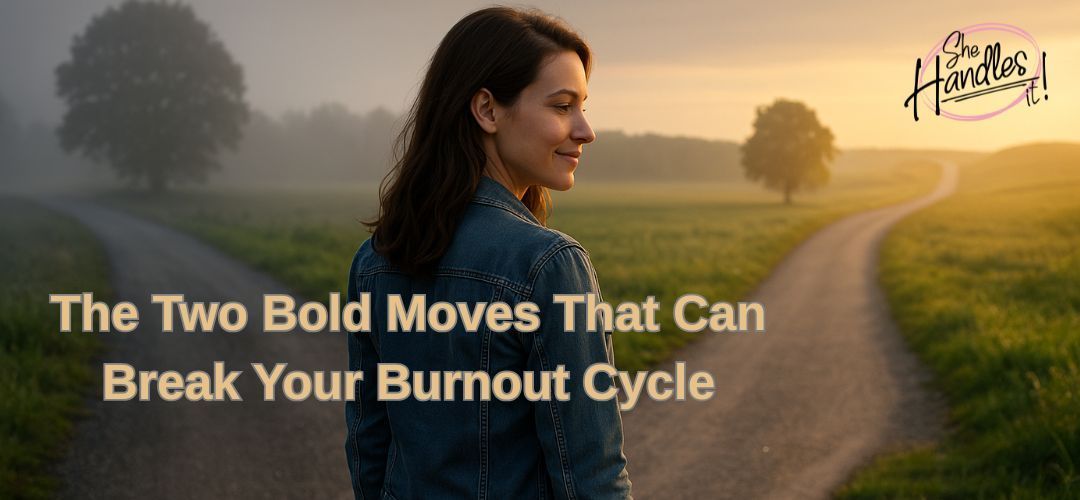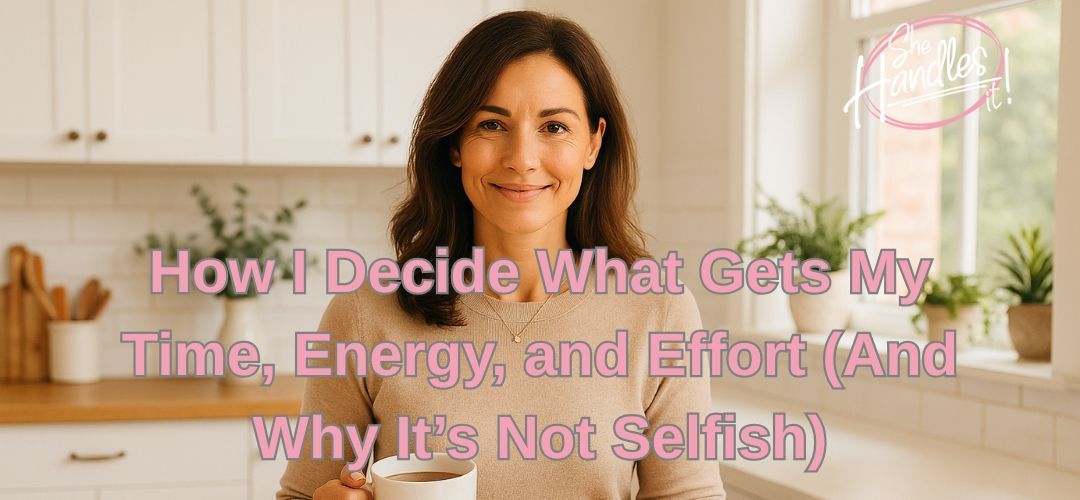
Search She Handles It Blog Posts
Why Doing Nothing Feels So Weird (And Why You Need to Do It Anyway)
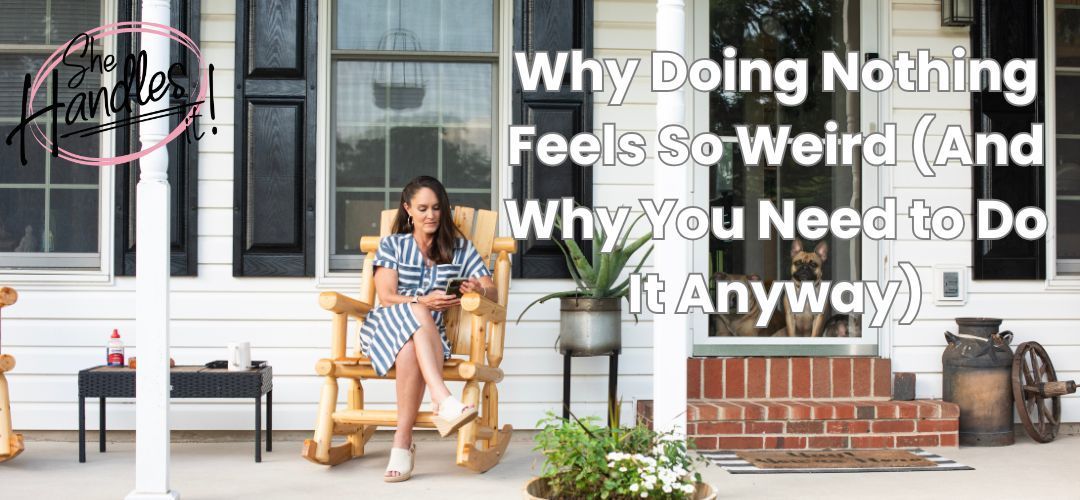
The “Nothing” Problem We Don’t Talk About
I was listening to Mel Robbins recently (because, really, who doesn’t need a dose of her truth bombs from time to time?) and she said something that hit me right in the gut:
She said that for over-productive people, doing nothing isn’t just hard—it actually feels weird.
Now, at first I thought, “Weird? No, it’s guilt. I feel guilty when I sit on the couch and do nothing.” And sure, guilt shows up plenty for me. But when Mel said the word weird—that little bell went off in my head. Because she was right. Sometimes it isn’t guilt at all. Sometimes it’s that awkward, uncomfortable feeling of not knowing what to do with yourself when you don’t have a list to check off, a task to power through, or a schedule keeping you in line.
I don’t know about you, but that word cracked something open for me.
Guilt vs. Weird: My Couch Confession
Let me paint you a picture. It’s a Sunday afternoon. I’ve got a cozy couch, maybe a blanket, maybe even a snack (because snacks make everything better). And yet—I’m restless. My brain is screaming:
- “You should be folding laundry.”
- “You should be prepping for the week.”
- “You should be catching up on emails.”
You get the theme: you should be doing something.
And sure, there’s guilt in that voice. But if I’m honest, a lot of it is just plain weirdness. I’m so used to being in motion that stopping feels foreign, like I’m doing something wrong.
What’s hilarious (in a twisted kind of way) is that I don’t feel that same guilt or weirdness when I’m hiking or kayaking. Why? Because those things look “productive.” I’m moving my body, I’m outside, I can file it all neatly under “healthy lifestyle.” No guilt. No weirdness. Just joy and clarity.
But plop me on the couch with nothing to do? Suddenly my brain is like a toddler at the grocery store throwing a tantrum.
Why We Struggle With Stillness
Here’s the thing: high-achieving, do-all-the-things women (hi, yes, that’s us) are wired to stay busy. We confuse productivity with worth. We think motion equals progress. And when that motion stops, the silence is deafening.
Doing nothing feels weird because we’re not practiced at it. We’ve trained ourselves to equate stillness with laziness, when in reality,
stillness is where we restore, recharge, and reconnect with ourselves.
But here’s the kicker: most of us don’t even know how to be still. We know how to unwind through activity—workouts, errands, girls’ nights, even self-care routines that are secretly just more boxes to check. But true nothingness? That’s foreign territory.
My Shift: Structured “Nothing” Time
So here’s what I’ve learned about myself: I can’t just flop into stillness. My brain will not cooperate. I have to be intentional about it.
For me, that looks like saying it out loud:
- “I am going to take a break and sit outside on the porch.”
- “I am going to rock in my chair and just…exist.”
- “I am going to watch two episodes of whatever ridiculous show Brian and I are streaming right now.”
When I name it, my brain gets the memo: This isn’t laziness. This is the plan. And because it’s the plan, it suddenly feels less like wasted time and more like chosen time.
That tiny shift—framing my nothingness as intentional—has been huge for me.
Permission Slip: Doing Nothing Counts
If you’re like me, you need to hear this: doing nothing is not wasted time. It counts. It matters. It is productive.
You don’t need to “earn” your rest by checking off your entire to-do list. You don’t need to justify it with physical activity. You don’t need to apologize for it.
You just need to practice it.
Doing nothing might feel weird at first. It might feel uncomfortable. But so did driving a car, riding a bike, or learning how to send your first email back in the AOL dial-up days. (Yes, I’m dating myself. Don’t judge.) You didn’t know how to do it—until you did.
Stillness works the same way.
Practical Tips for Practicing “Nothing”
So, how do you start? Here are a few things that have worked for me and my clients:
1. Say It Out Loud
Don’t just collapse into the couch. Name your nothing: “I’m going to sit here and do absolutely nothing for 20 minutes.” Framing it makes it intentional, not accidental.
2. Start Small
Ten minutes is enough. Seriously. If the idea of an entire afternoon of nothing makes your skin crawl, try a coffee on the porch with no phone. Baby steps.
3. Make It a Ritual
Your brain loves patterns. Tie your nothing time to something else—after dinner, after your workout, or before bed. For me, it’s TV with Brian at night.
4. Redefine “Productive”
Rest
is productive. Think of it as recharging your battery. You don’t yell at your phone for “being lazy” when it sits on the charger, right? Give yourself the same grace.
5. Give Yourself Permission
This is the hardest one, but it’s everything. You don’t need to justify your nothingness. You’re allowed to stop. You’re allowed to rest. You’re allowed to just…be.
Stillness Is the Strategy
Here’s what I know: the women I work with aren’t failing because they don’t do enough. They’re failing because they never stop doing. And eventually, all that motion leads to burnout.
Stillness isn’t weakness. It’s strength. It’s not laziness. It’s leadership—over yourself, your energy, and your life.
So the next time you feel that weirdness creep in, remember: nothing is not nothing. Nothing is everything.
And if you’re struggling to give yourself permission, let me help you. This is the work I do every day with women who are learning how to reclaim their reins, their energy, and their joy.
Schedule your free Discovery Call today and let’s start building a life that doesn’t just look productive—it actually feels good.
